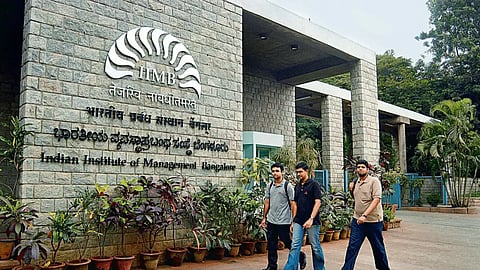‘The era of plain, vanilla MBA is over’
Some of the top-notch units of IIM and IIT have faced placement challenges in the recent past. Is their placement credibility under threat?
Recent trends certainly reveal a concerning decline in the quality and expected placements from these institutions. According to the latest data, nearly 38 per cent of IIT graduates faced challenges in securing jobs, with median salaries now hovering around Rs15-16 lakh, a significant drop from the previously expected Rs18-20 lakh range. While IIMs have reported some level of placement success, the significant variance in average salaries among top B-Schools, ranging from Rs18 lakh to Rs35 lakh, highlights the disparities and competitive landscape within which these institutions operate, further exacerbated by ongoing macroeconomic factors that necessitate a shift towards skill acquisition and education aligned with the demands of an increasingly digitized and technology-driven market.
A recent Deloitte survey reveals a concerning 26 per cent year-over-year decline in Pre-Placement Offers (PPOs) extended to graduates from FY23 to FY24, highlighting the shifting expectations of employers and market demands for talent. While the Indian education system has excelled in providing theoretical knowledge, there is an urgent need to shift pedagogical approaches towards skills-based education that equips students for real-world challenges.
IIMs set up in Tier I and Tier II locations – how are they performing on placement front?
While some non-metro IIMs have reported impressive placement statistics, achieving placement rates of up to 100 per cent in sectors like consulting and IT, this success is not uniform across all institutions. The fierce competition for top-tier roles exacerbates the situation, leaving graduates from newer IIMs at a disadvantage compared to their peers from established institutions. Consequently, the average salaries for graduates from these IIMs vary significantly, ranging approximately from Rs15 LPA to Rs35 LPA. Newer IIMs, despite starting from lower salary bases, are experiencing notable increases between 20 per cent and 30 per cent, indicating their potential for growth. Thus, while the presence of IIMs in non-metro locations enhances opportunities for graduates, it is imperative that these institutions bridge the gap between education and industry needs to ensure that their graduates are industry-ready, and capable of meeting the demands of a rapidly changing job market.
The traditional MBA, rooted in theoretical knowledge, is no longer sufficient to meet the demands of today’s fast-paced industries
Do you think, the era of plain, vanilla MBA degrees is over now?
The era of traditional, one-size-fits-all MBA degrees is rapidly becoming obsolete as India’s education and industry landscape confronts a trifecta of challenges: a shortage of talent with the right skills, rapid technological disruption, and evolving business models. The traditional MBA, rooted in theoretical knowledge, is no longer sufficient to meet the demands of today’s fast-paced industries. The need of the hour is not just education, but continuous upskilling through programs that seamlessly blend education with practical experience.
Recently, probably in one of your reports, you had also revealed the high attrition rates among the students who come out of top tier institutes and join the market place. What’s your assessment of this trend?
Our recent market analysis, along with internal studies, reveals a concerning trend: attrition rates range from 20-25 per cent for top-tier institutions and 17-20 per cent for Tier II and III campuses, indicating that many graduates are stepping into roles that fail to leverage their full potential or align with their career ambitions. The rapid transformation of business models, largely driven by technological advancements, has intensified this disconnect, as industries struggle to match the demand for skilled talent with the quality of jobs available. This revolving door of talent not only increases recruitment costs but also hampers organizational continuity, reducing productivity and eroding institutional knowledge over time. The financial and operational toll of high attrition rates makes it imperative for businesses to reevaluate their talent retention strategies and focus on long-term employee engagement.

